When it comes to ancient monasteries, Ireland certainly has its share. Glendalough Monastery, located near the Wicklow Mountains National Park, is one of the best preserved & earliest monastic sites in County Wicklow and well worth the visit to explore.
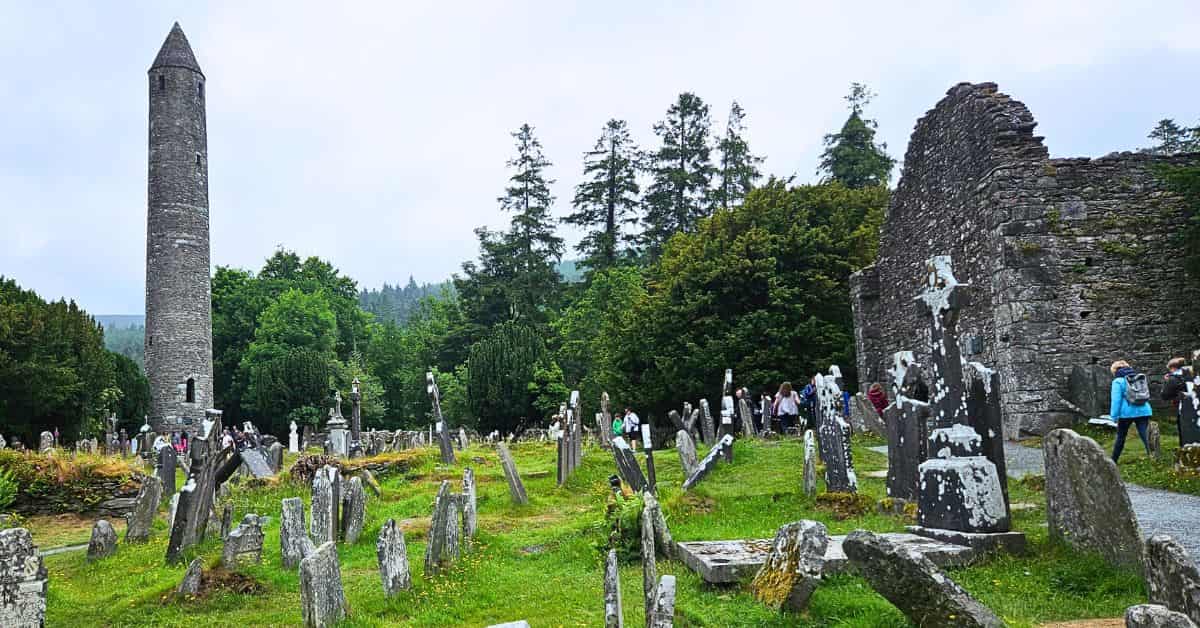
About Glendalough Monastery
The ancient monastery, founded in the 6th century by St. Kevin, lies in a glaciated valley with two lakes.
It was a major center of monastic and religious activity for several centuries, before being destroyed by the Normans in 1214.
What remains are several stone churches, a round tower, and many decorated crosses that date between the 10th & 12th centuries.
What You’ll See at Glendalough Monastery
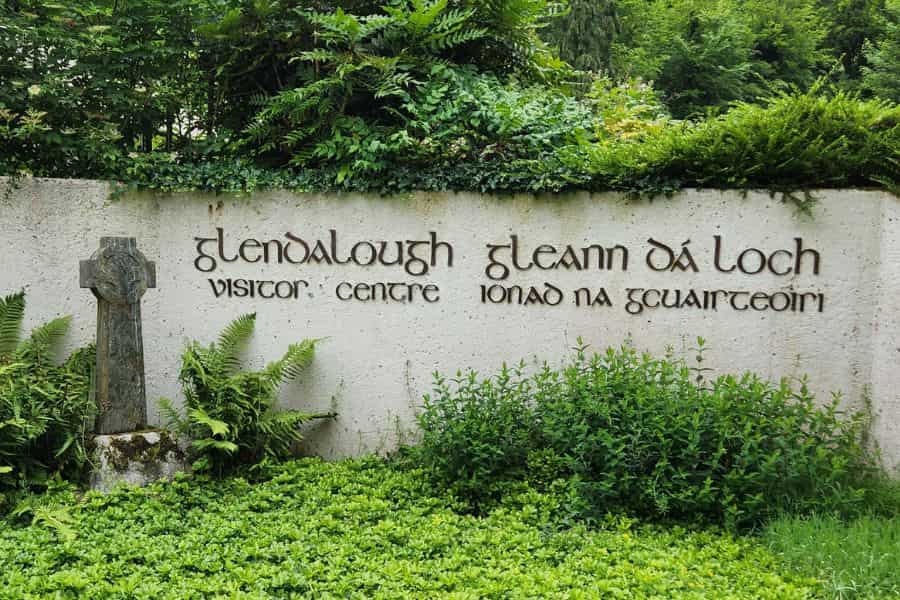
Glendalough Visitor Center
When you first arrive you will want to walk around the visitor center to better understand the site’s historic significance.

The lobby features a really cool LEGO sculpture of the entire area that helps put the monastery in perspective.

Inside the informational exhibit area there is a reconstructed diorama of what the settlement would have looked like in the 12th century.
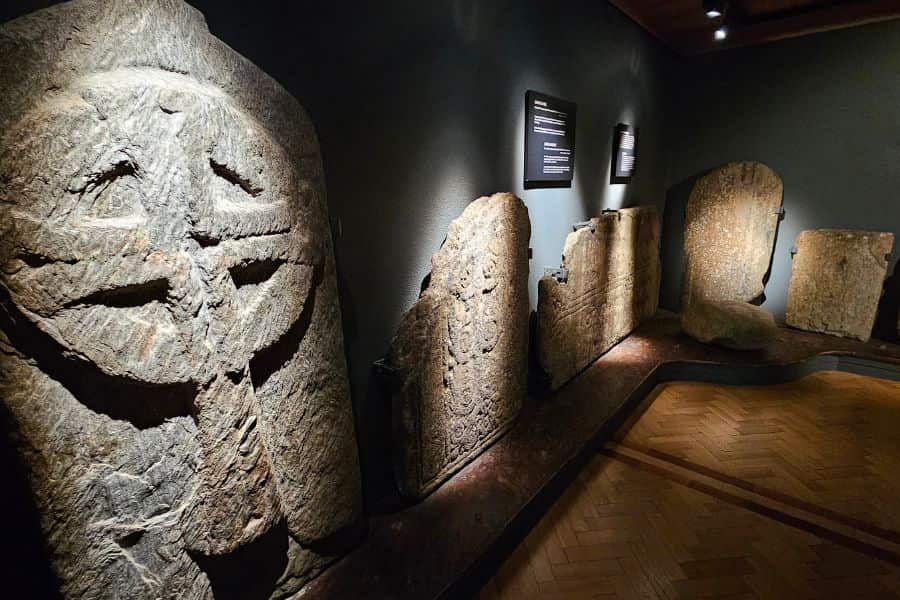
There are also displays featuring stone slabs and crosses that were excavated nearby the Monastic city.
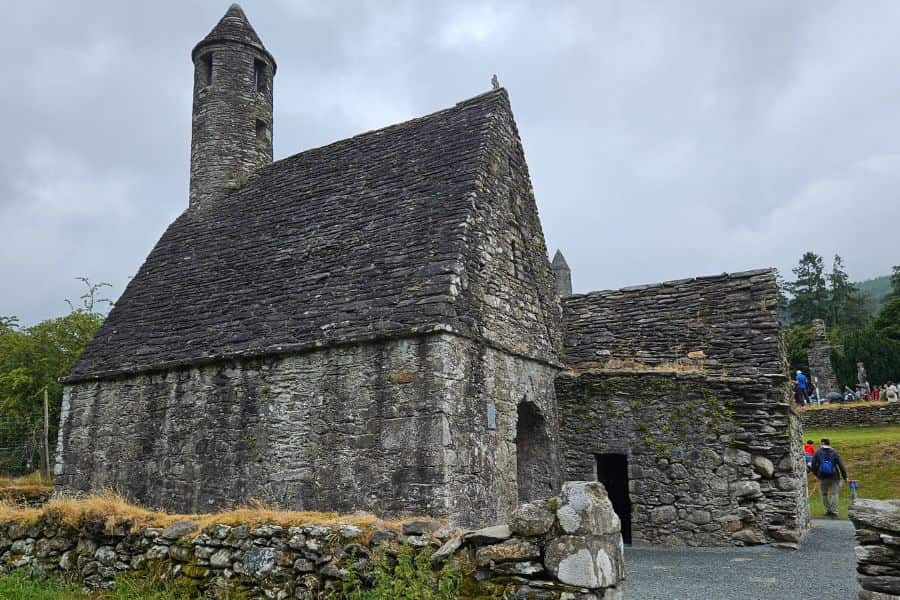
St Kevin’s Church Glendalough
This stone-roofed building originally had a nave only, with an entrance at the west end and a small round-headed window in the east gable
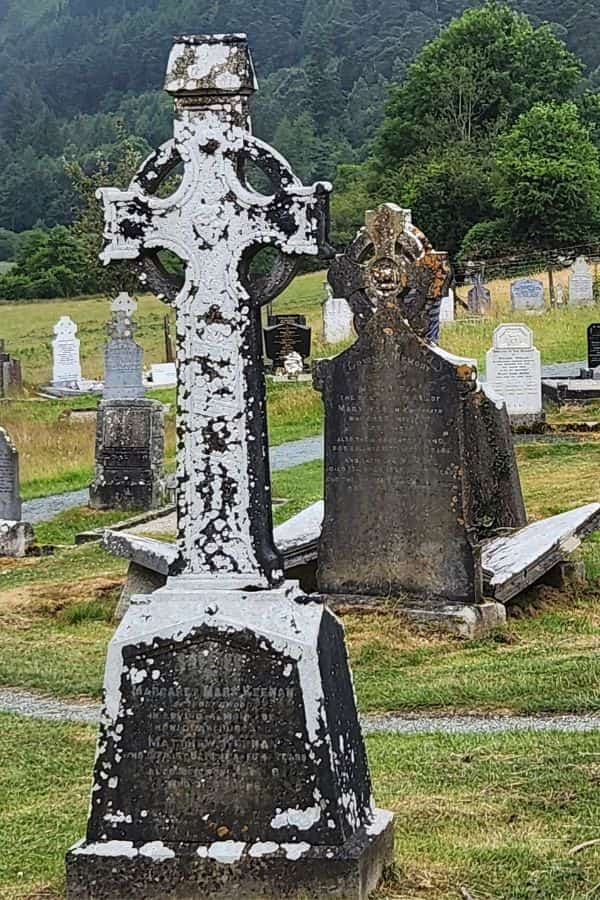
St Kevin’s Cross
St. Kevin’s Cross was carved from a single granite stone and was used as a way to get the pagan people of Ireland to assimilate to Christianity.
The cross combines the Christian cross with a circle to represent the Pagans’ worship of the sun.

Priest House
This small building, known as the Priest’s house, probably got its name due to the 18th-century practice of using the space to prepare former Priests to be buried.
St Kieran’s Church
St Kieran’s, unearthed in 1875, is the smallest of the surviving churches at Glendalough.
Only the foundation & that of a stone altar remains.

Cathedral of St. Peter and St. Paul
The Cathedral is the largest of the seven churches in Glendalough and was probably built on the site of an earlier church.
While the wooden roof has long since deteriorated, the stone-walled structure still remains.

Inside there is a wall cupboard, a stone font, grave slabs, and the remains of a decorated arch.

Round Tower Glendalough
The Round Tower, at over 100 feet, is one of the most iconic structures in Glendalough Monastic City.
Built between 800 to 1000AD, it is believed that it was used as a bell tower and lookout point for the monks and also where they would hide during attacks from Vikings and the Normans.
With its small doorway and narrow shape, it is easy to see why it would have prevented soldiers from having easy access.
It is one of the few landmarks at Glendalugh that remains fully intact (aside from the roof which was replaced after a lightning strike in 1876.
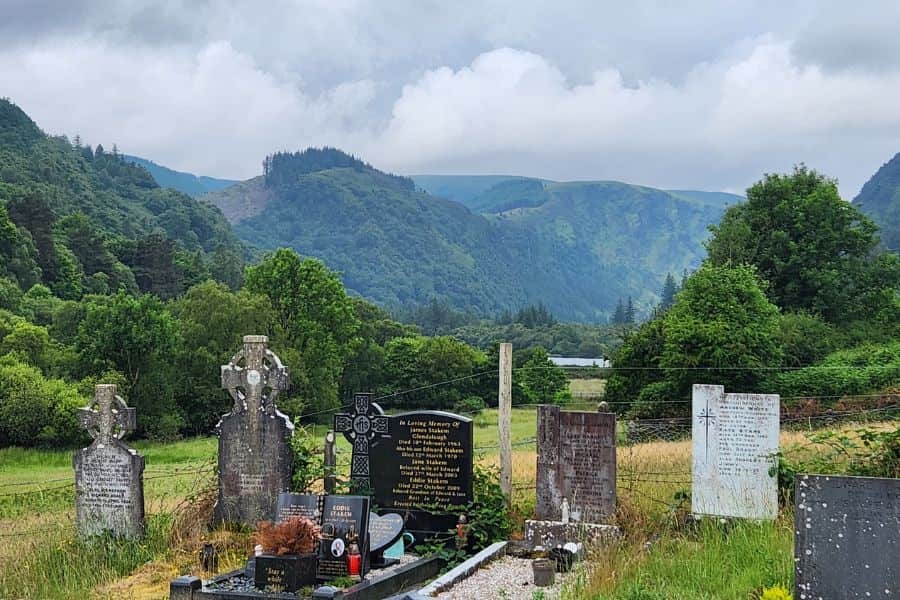
Glendalough Monastery offers visitors an opportunity to experience a slice of the past and gain insight into the life and culture of early Christian Ireland. Visitors can explore its ruins, admire the architecture, and enjoy the overall beauty of the Glendalough Valley.
Getting to Glendalough Monastery
Traveling to Glendalough Monastery by car is an easy 1.5-hour trip from both Dublin and Kilkenny so it makes a great day trip!
From Dublin by bus, it takes about twice as long to get to Glendalough. There are actually two buses that run daily, but you will want the one leaving at 11:30 am. It returns around 4:30 pm.
There is no direct bus from Kilkenny to Glendalough.
Another option is to book a private tour to take you from Dublin to places like Kilkenny & Glendalough. These tours take out much of the guesswork on getting there but do last all day.
